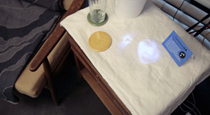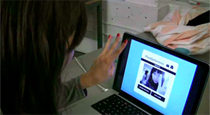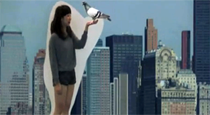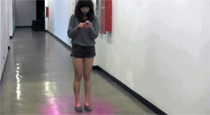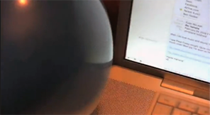|
||
| Introduction / PRELIMINARY RESEARCH / Ideas & Content / The Project: Curious Displays / Project Development / Experiential Prototype / Conclusion |
||

|
||

|
POSTGEHEIMNIS PostGeheimnis is a alternative form of communication that works as a complement to existing physical mail and email systems. The system exists as a digital interface for sending electronic "Posts" (messages) to physical objects in the recipient's home. The physical objects, in essence, are little mail couriers that alert you that you have a new Post. The sender creates a new Post from the digital interface, and selects not only which recipient will receive the Post, but which object will receive and "deliver" it, as well. The recipient, upon entering the home, will be greeted by objects all vying for his or her attention, wanting to deliver their messages. Email and physical mail both exist for a reason. In many ways, email has solved a lot of the problems that are faced by physical mail. Physical mail is slow, it takes a long time to reach the recipient, is expensive, and can sometimes get lost. At the same time, though, there is a certain sense of anticipation that comes with receiving physical mail--waiting for the mailman to arrive with a package for you can sometimes be the highlight of the day. There is something about the physicality and tactility of physical mail that makes it very exciting for the person receiving it. Email, on the other hand, is instant--it arrives within milliseconds of being sent, and can connect people in ways that physical mail simply cannot. It provides an easy channel for communication. However, in many ways, email has become a problematic space for virtual clutter, a single address where the whole world can spam you with all kinds of messages: advertisemsents, promotions, work-related messages, personal messages. The important messages can often times get lost in the mess. Our project is interested in the affordances of both physical and electronic mail. It doesn't try to solve the problems faced by the two different systems, rather, attempts to create a new space for communication drawing together the positive aspects of both. Physical Mail: Anticipation, excitement, physicality, builds up, piles up, asks for your attention, envy (see when other people get mail) Electronic Mail: Instant, accessibility, customizability, portability THE PROJECT The PostGeheimnis System consists of a platform of "super-objects" that have been imbued with special communication behaviors. The objects exist in conjunction with an input management interface, from which a sender can create video/audio/text/image messages to recipients. From this interface, a sender composes a message to a recipient, and then selects which object to send the message to. Once an object receives a message in its queue, it will attempt to attract your attention, letting you know that you have a message. In essence, the PostGeheinmis objects become little postmen within your home that deliver special messages from your close friends and family. In designing the PostGeheimnis system, we were careful to take into consideration the point we had identified in our initial physical mail/email research. We understood that we weren't trying to "fix" email, rather, we were creating the PostGeheimnis system as an alternative method of communication for special messages akin to a physical letter or package from a close friend or family member that would otherwise lose its "specialness" if sent through email. Additional design decisions were made with the design of the system itself. We questioned whether to give the sender or receiver the ability to choose which object a message was delivered to. If the recipient were to make the decision (i.e., all messages from your mother go to your armchair), then the system would be more like a bin notification system. We decided to go with the sender having the decision-making role in the system. In this way, PostGeheimnis is much more akin to the act of coming home and getting your mail from your physical mailbox--when you reach in, you have no idea what you're going to get. Similarly, the recipient, upon entering his house, has no idea how many messages he's received, who the messages are from, or what the messages are about until he enters the home and engages with any objects that have messages to deliver. We found it important to engage with this sense of excitement and anticipation. IMAGINATION AS RESEARCH Charting the differences between physical and electronic mail allowed us to clearly identify opportunity areas for design interventions. We took the understanding that emerged from this more critical analysis and took a step back from the information and let ourselves brainstorm freely, giving ourselves the freedom to come up with wild ideas without worry about practicality or feasibility. We allowed ourselves to let our imagination to drive the design, and to allow a sense of exploration and play to guide the project forward. |


CURIOUS DISPLAYS. Copyright 2009. Media Design Program, Art Center College of Design. About Julia Tsao. Acknowledgements & Thanks.

